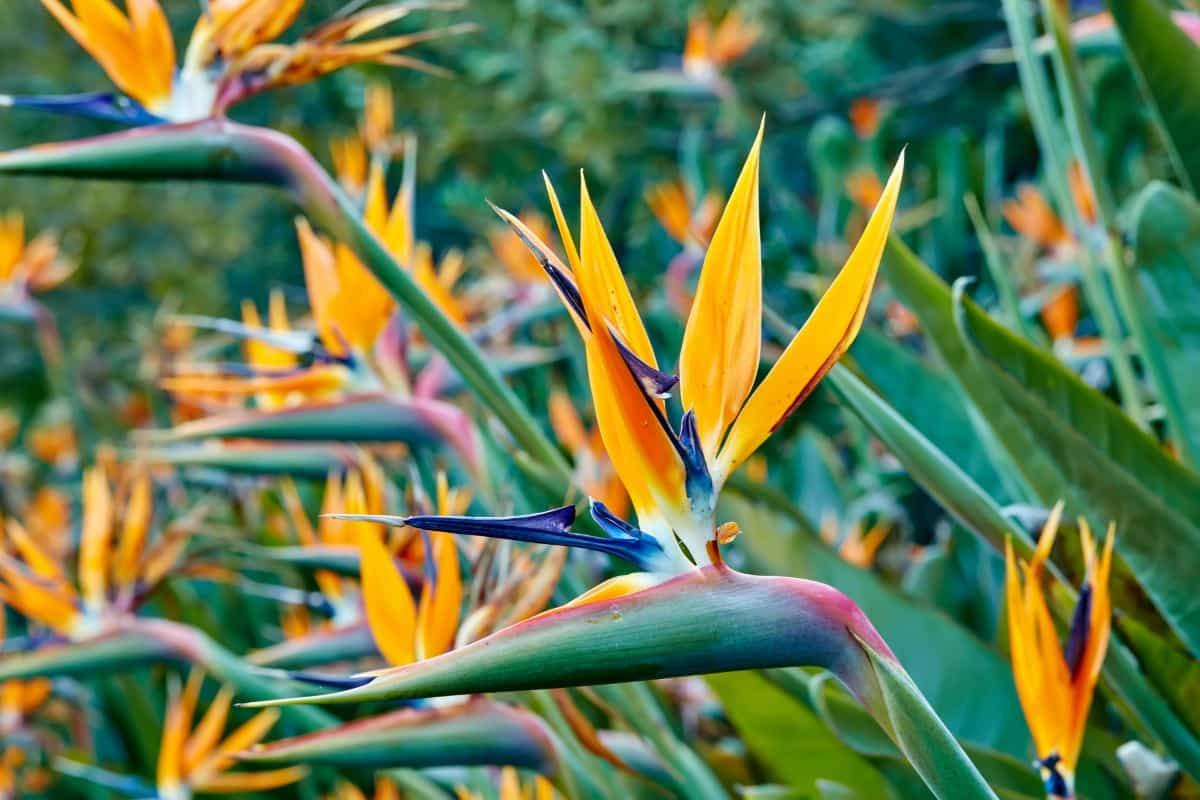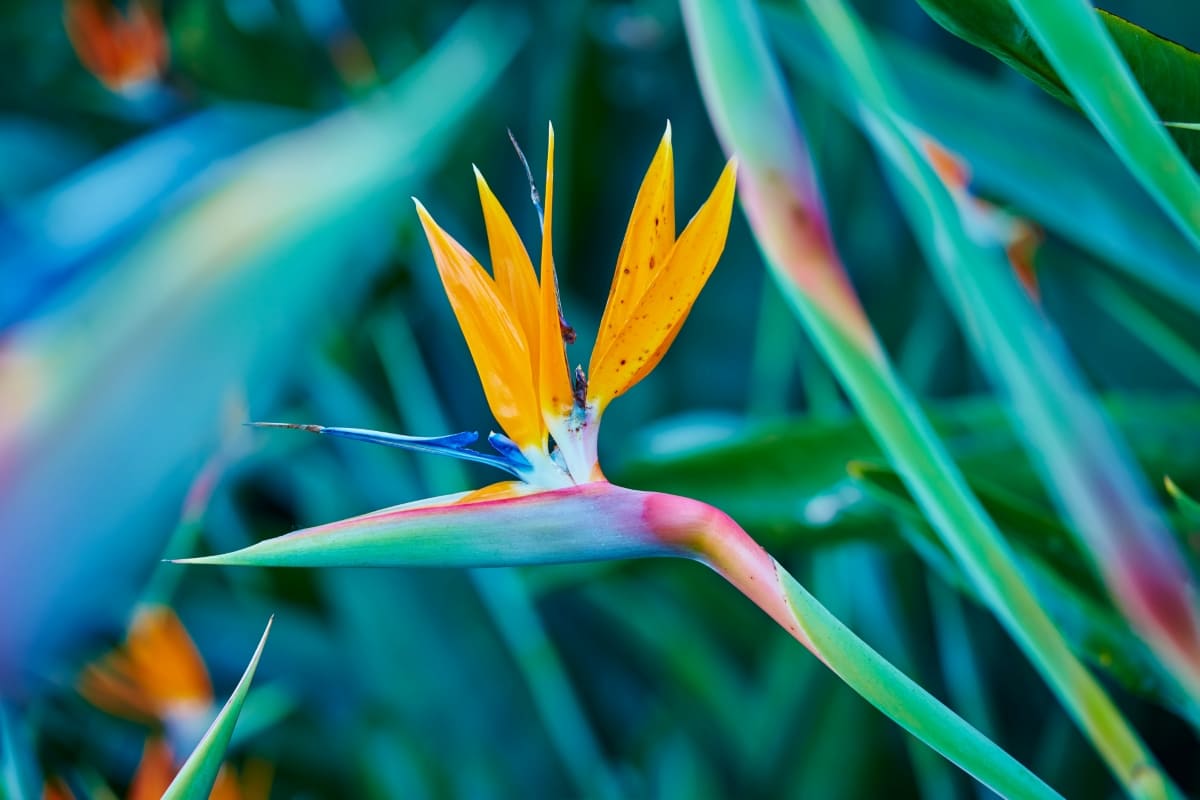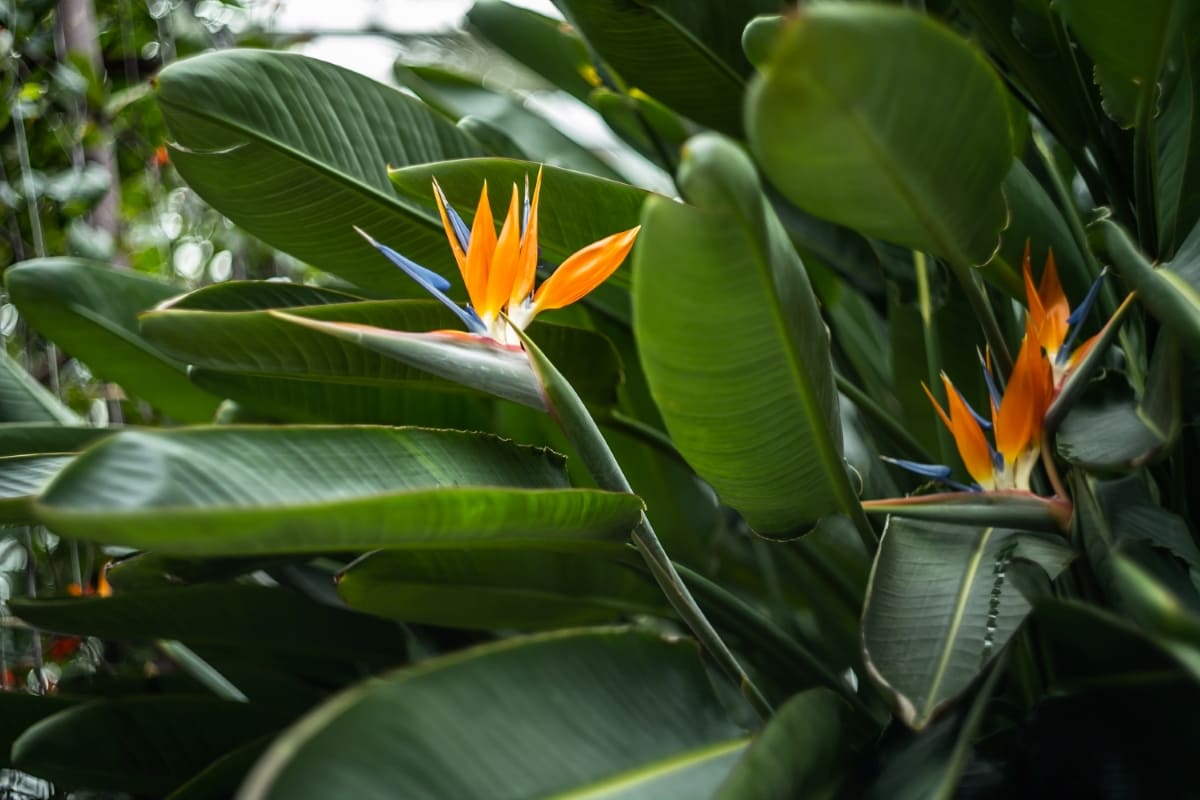Are you drawn by the exotic charm of the Bird of Paradise plant? This stunning plant, known for its crane-like flowers resembling a bird in flight, is a marvel in any garden. Despite its tropical origins, growing and nurturing the Bird of Paradise is possible even in non-tropical climates. You can turn your backyard or living room into a tropical paradise with the right care. This article aims to guide beginners through planting, growing, and caring for Bird of Paradise plants.

How to Grow and Care for Bird of Paradise
Best Soil and Planting Conditions for Bird of Paradise
Bird of Paradise plants thrives in rich and well-drained soil. These plants prefer soil full of nutrients to grow healthy and strong. You can mix garden soil with compost or organic matter to start your plants well. It’s also a good idea to use a bit of coarse sand or perlite to improve the soil’s drainage.
When it comes to planting, select a spot where the soil drains well in your garden. Standing water can harm the roots of your Bird of Paradise plant. If you’re growing your plant indoors, use a pot with plenty of drainage holes. A layer of pebbles at the bottom of the pot can also help with proper drainage.
Sunlight and Temperature Requirements for Bird of Paradise
Bird of Paradise plants are lovers of sunlight and warm temperatures. They need plenty of bright but indirect sunlight to flourish. A site receiving direct morning sunlight for several hours, transitioning to diffused light for the remainder of the day. However, don’t expose your plant to harsh afternoon sunlight, as it can burn the leaves. The Bird of Paradise thrives in temperatures between 65 and 85 degrees Fahrenheit. Make sure the temperatures don’t drop too low, especially during winter. Indoor plants should be kept away from drafts and cold windows.
Propagation Methods for Bird of Paradise
Bird of Paradise plants can be propagated in two ways: by dividing mature plants or by planting seeds. Division is the easier method and is best done in the spring. Split a Bird of Paradise by cautiously extracting it from its soil or container. Gradually partition the mass into two or more segments, confirming each possesses connected roots. Replant the sections in rich, well-draining soil.
How to Grow Bird of Paradise From Seeds
Growing a Bird of Paradise from seeds is more challenging but doable. Start by soaking the seeds in lukewarm water for a day or two. Then, plant them in a container filled with moist, well-draining soil. Seal the receptacle with a plastic cover to mimic a greenhouse environment and position it in a warm, well-lit spot. Seed sprouting may require a period of 4 weeks to 6 months, underscoring the importance of patience.
Watering and Irrigation Tips for Bird of Paradise
When it comes to watering, the Bird of Paradise prefers consistency. Maintain a slightly damp but never saturated soil condition. Hydrate your plant weekly during the summer, and bi-weekly during the winter months. Indoor plants typically require less frequent hydration than their outdoor counterparts. Excessive watering can induce root rot, so caution is advised. Verify the top inch of the soil is parched prior to each watering.
In case you missed it: How to Grow and Care for Butternut Squash: A Comprehensive Guide for Beginners

Fertilizing Schedule for Healthy Bird of Paradise Growth
Bird of Paradise plants benefits from regular feeding during the growing season. A slow-release fertilizer applied every two months from spring to early fall will support healthy growth. Opt for a balanced fertilizer containing equal parts of nitrogen, phosphorus, and potassium. Always follow the manufacturer’s instructions when applying fertilizer.
Pruning and Trimming Techniques for Bird of Paradise
Pruning your Bird of Paradise plant is about maintaining its appearance and promoting its health and vigor. Start by removing any dead or yellowing leaves to allow room for new growth. Using clean, sharp scissors or secateurs’s best to prune in the spring or early summer. Cut the stems at the base, and handle the plant gently to avoid damage.
Common Pests and Diseases of Bird of Paradise and How to Treat Them
Bird of Paradise plants are relatively hardy but can occasionally be affected by pests and diseases. Common issues include aphids, mealybugs, scale, and spider mites. Consistently monitor your vegetation for indicators of pest infestation, such as tiny insects, white fibrous accumulation, or leaf discoloration.
Remove any pests by hand or use a gentle insecticidal soap if you spot them. Fungal diseases, often caused by overwatering, can also affect Bird of Paradise plants. If your plant’s leaves show signs of rot or spotting, it’s important to let the soil dry out and cut back on watering. In severe cases, a fungicide may be necessary.
Indoor Care Tips for Bird of Paradise Plants
Caring for a Bird of Paradise indoors involves a few special considerations. First, ensure your plant gets plenty of bright, indirect light. Place it near a south or west-facing window, if possible. Second, ensure the pot and soil have good drainage to prevent waterlogged roots. Third, keep the plant away from drafts, heat vents, and air conditioners. Remember to maintain a regular watering and feeding schedule and mist the leaves periodically to increase humidity.
Winter Care and Protection for Bird of Paradise Outdoors
In colder climates, protecting your Bird of Paradise during winter is crucial. If temperatures in your area drop below 60 degrees Fahrenheit, bringing your plant indoors is best. If this isn’t possible, consider covering your plant with a frost blanket or moving it to a sheltered location. For outdoor plants in milder climates, reducing watering and ceasing fertilizer applications during winter will help keep them healthy. Monitor the weather forecast closely and be prepared to take action if a frost is predicted.
In case you missed it: How to Grow and Care for Sago Palm: A Comprehensive Guide for Beginners

Conclusion
While the Bird of Paradise may appear to be a demanding plant, it can be a rewarding addition to any home or garden with the right care and attention. With these guidelines, even beginners can experience the joy of nurturing this tropical beauty. The Bird of Paradise’s striking flowers and lush leaves will be a captivating centerpiece, and caring for them can be a fulfilling hobby. So why not invite this stunning ‘bird’ into your garden or home and enjoy its magnificent beauty?
- Feed Your Flock for Less: Top 10 Tips to Save on Chicken Feed
- Ultimate Guide to Ossabaw Island Hog: Breeding, Raising, Diet, and Care
- Hatching Answers: The Top 10 Reasons Your Chickens Aren’t Laying Eggs
- Eggs and Economics: Breaking Down the Cost of Raising Backyard Chickens
- Defend Your Greens: Proven Methods to Keep Iguanas Out of Your Garden
- Ultimate Guide to Cinnamon Queen Chicken: A Comprehensive Guide for Beginners
- Ultimate Guide to California Tan Chicken: Breeding, Raising, Diet, Egg-Production and Care
- Ultimate Guide to Marsh Daisy Chicken: Breeding, Raising, Diet, and Care
- 10 Types of Chicken Farming Businesses You Can Start for Profits